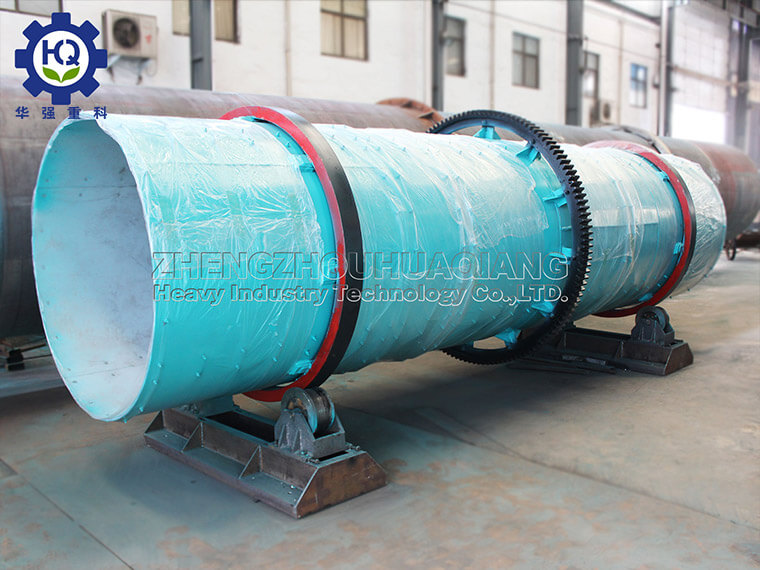The rotary drum granulator (also known as rotary cylinder granulator or drum granulator) is widely used in NPK fertilizer (nitrogen phosphorus potassium compound fertilizer) production lines, and its unique granulation principle and high efficiency make it one of the mainstream equipment in the industry. The following is a basic introduction to the granulation process of the rotary drum granulator in the NPK fertilizer production line:
working principle
The working principle of the rotary drum granulator is mainly based on the centrifugal force and self-organization effect in physics:
When the moist mixed material enters the rotating cylinder, due to the centrifugal force, the material begins to roll along the cylinder wall.
At the same time, the internal tilt angle causes the material to move forward, and with appropriate moisture and binder, the material gradually aggregates into spherical particles.
The design of the plate inside the drum helps to achieve uniform distribution and rolling of materials, promoting the formation and growth of particles.
Key features
Continuous production: The rotary drum granulator supports large-scale and continuous production modes, suitable for large-scale industrial applications.
Strong adaptability: able to handle different types and characteristics of raw materials, including powder, sheet or fine particle materials.
Strong controllability: By adjusting the speed, inclination angle, moisture content, and adding auxiliary materials, the size, shape, and hardness of particles can be precisely controlled.
Granulation process flow
Material pretreatment: The mixed raw materials are transported by conveyor to the granulator for necessary crushing and premixing.
Granulation: The material enters the rotary drum granulator and forms balls through centrifugal force and self-organization effect.
Particle maturity: Under appropriate time and conditions, the particles continue to roll in the drum until they reach the desired size.
Discharge: Mature particles are discharged from the other end and enter the subsequent drying, cooling, and screening processes.
Technical optimization
To improve efficiency and product quality, modern rotary drum granulators are often equipped with advanced control systems, such as PLC programming, sensor monitoring, and data analysis software, to achieve precise control of parameters such as temperature, humidity, and speed.
conclusion
The rotary drum granulator plays an important role in NPK fertilizer and other fertilizer production lines due to its excellent granulation ability and wide adaptability. Its high efficiency and versatility make it an important tool for advancing modern agriculture and fertilizer industry. However, with the continuous innovation of technology, the design of rotary drum granulators will be further optimized in the future, moving towards higher productivity, lower energy consumption, and more environmentally friendly direction.